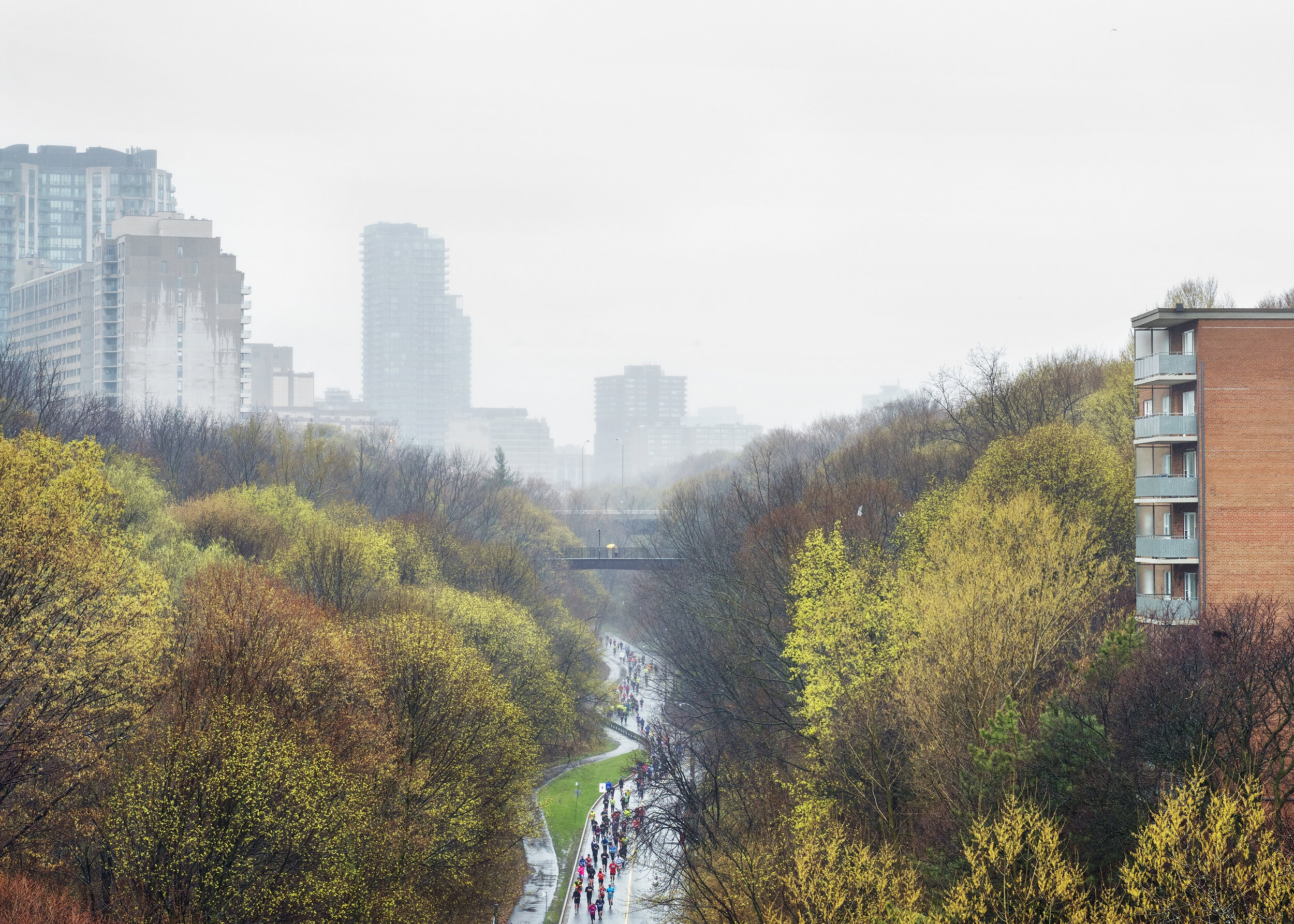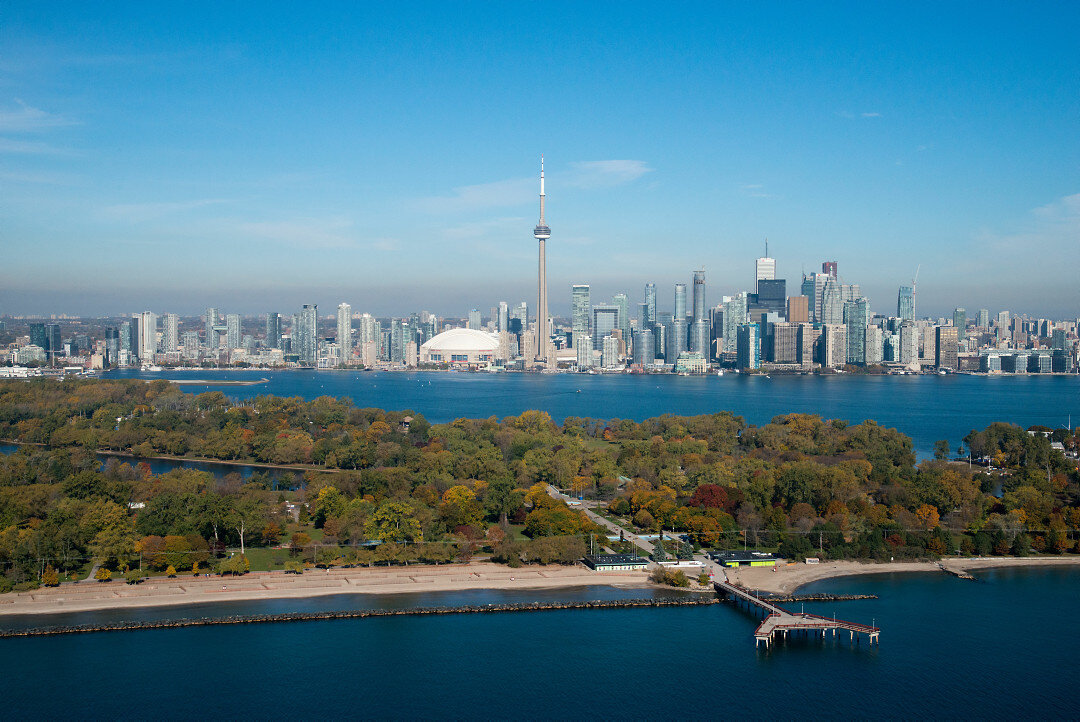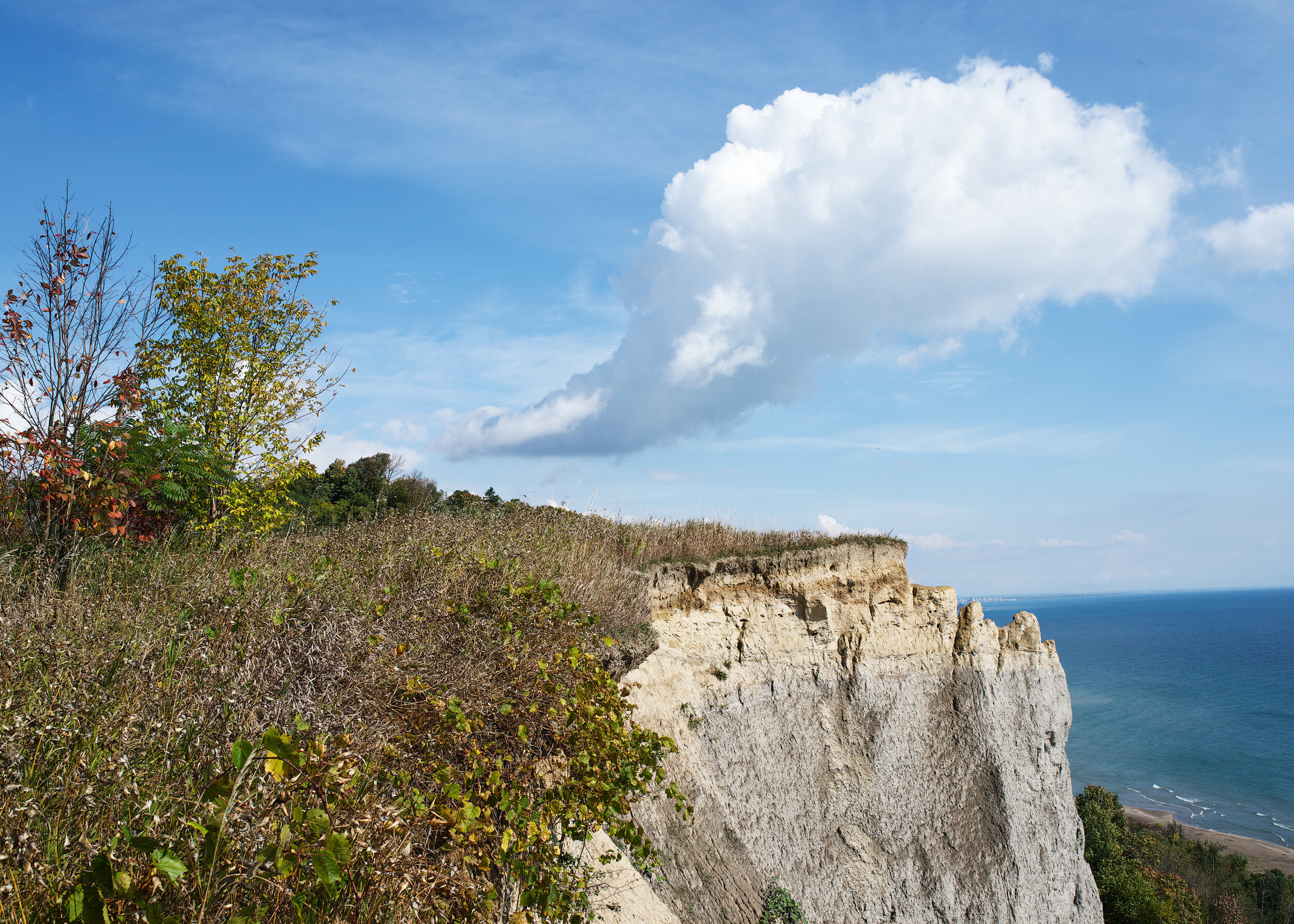toronto, canada
Biophilic Cities Member since 2020
For a large city, Toronto is a place of surprisingly rich biodiversity. Located on the north shore of Lake Ontario with abundant fresh water, Toronto lies at the cross roads of two forest regions and the convergence of two migratory bird flyways. An extensive wooded ravine system and diverse shoreline are Toronto's most defining natural features. Measuring more than 300 kilometres and covering 11,000 hectares, the ravine system reaches into almost every part of the city, providing corridors for people, plants and wildlife away from the bustle of the city. Over 46 kilometres of freshwater shoreline provide unique habitats, migration corridors and myriad recreational opportunities. Together, the ravines and the shoreline support remnants of the original habitats that once covered the landscape including mixed forest, prairie and black oak savannah, sandy dunes and marshy wetlands. More than half of Toronto's 8,000 ha of parkland are natural parklands. Some of the most beloved include High Park, the Toronto Islands, Tommy Thompson Park, the Scarborough Bluffs and the Rouge Valley, Toronto's largest wilderness area and part of Canada's first national urban park.
The fourth largest city in North America, Toronto is a dense and rapidly growing urban centre. As in most urban areas, the natural environment is under pressure from urbanization, pollution, invasive species, habitat loss and climate change. Recognizing these challenges, Toronto was the first city in North America to develop Bird-Friendly Development Guidelines to make new and existing buildings less dangerous to migratory birds and to adopt a bylaw to require green roofs on most new development. Toronto was also the first municipality in Ontario, Canada to require sustainable performance measures for new development through a Green Standard that is integrated with the development approval process. Toronto is recognized world-wide for its trees and is working towards expanding the tree canopy to 40% through investment in public tree programs as well as tree planting on private land. Wooded ravines and natural areas are protected through forest management, restoration, control of invasive species and practices like prescribed burns in prairie and savannah habitats. Toronto has also developed city-wide strategies to protect, enhance and celebrate the ravines, biodiversity and pollinators.
Toronto residents are passionate about the natural environment, volunteering with nature groups, participating in city-sponsored community stewardship, tree planting and natural surface trail construction, and engaging with others about local ecology and the environment through volunteer programs at popular outdoor learning destinations. The non-human residents of Toronto are also helping re-connect people with the natural world through an engaging Biodiversity Series that raises awareness about the rich biodiversity that can be found in Toronto, the seriousness of biodiversity loss and actions that can help.
Toronto is named after Tkaronto a Mohawk word meaning 'where there are trees in the water'. As part of deepening our connection to place and understanding our past, Toronto is asking what more can we learn about where we live from our indigenous history and from the teachings and traditions of the many nations who occupied these lands as part of their traditional territories and with whom we still share this place.
City Contacts:
Liora Zion Burton, Planner, City Planning, City of Toronto
Geena Richards, Program Standards and Development Officer, City of Toronto
city SPOTLIGHTS
Biodiversity Strategy: Aiming to support healthier, more robust biodiversity and increased awareness of nature, the Biodiversity Strategy was developed through extensive consultation with the public, stakeholders, agencies and City divisions.
Ravine Strategy: Toronto's Ravine Strategy will guide the future management, use, enhancement and protection of the ravines which make up 17 percent of Toronto's land area.
Resilience Strategy: A vision, goals, and actions to help Toronto survive, adapt and thrive in the face of any challenge, particularly climate change and growing inequities.
TransformTO: TransformTO lays out a set of long-term, low-carbon goals and strategies to reduce local greenhouse gas emissions and improve our health, grow our economy, and improve social equity.
Bird Friendly Guidelines: The city has produced two documents that help mitigate the dangers the urban environment poses to migrating birds.
Pollinator Protection Strategy: Toronto's Pollinator Protection Strategy was created to support the vision of our city being home to diverse pollinator communities that contribute to resilient ecosystems and enhance urban biodiversity.
Volunteer Tree Planting & Stewardship: Volunteers participate in tree planting and stewardship events help to care for natural areas across the city.
Biodiversity Series Booklets: A number of the non-human residents of Toronto are profiled in the beautiful and informative biodiversity series of booklets.
Enduring Wilderness: This book explores the sometimes complex relationship between Toronto’s public wilderness spaces and civic life.
A Property Owner's Guide to Healthy Ravines: 40% of Toronto's ravine system is located on private property. This booklet is a resource for property owners of ravine lands to understand potential hazards (e.g. erosion) and suggestions for how to support ecological health on their own property.
Mountain Equipment Co-op (MEC) green roof. Photo by Padraic on Flickr.
Designing the Built Environment with Biodiversity in Mind
By Jane Weninger
November 2024
The Toronto Green Standard is a set of sustainable performance requirements for new private and city- owned development that includes biodiversity performance measures. Toronto’s experience in developing and implementing the Toronto Green Standard may be helpful to other cities interested in creating site and building standards to support biodiversity in their own jurisdictions.
biophilic codes
Sustainable design requirements for new private and city-owned developments, including design of buildings to reduce bird collisions and mortality and enhancement of habitat and ecosystems.
Toronto's green roof bylaw has been in effect since 2009. Toronto has over 640 green roofs.
Ravine and Natural Feature Protection Bylaw
This bylaw protects important natural features that are vulnerable to degradation due to removal of trees, changes in grade or lack of management.
Environmentally Significant Areas
Environmentally Significant Areas are the ecological jewels of our natural heritage system; they are particularly sensitive and require additional land use protection to maintain their unique environmental qualities.


















